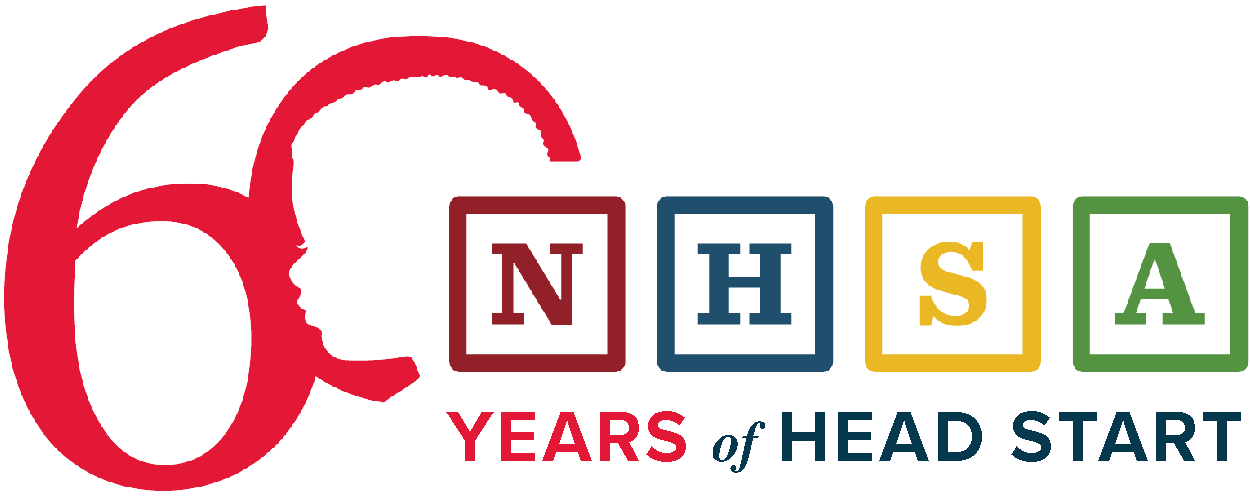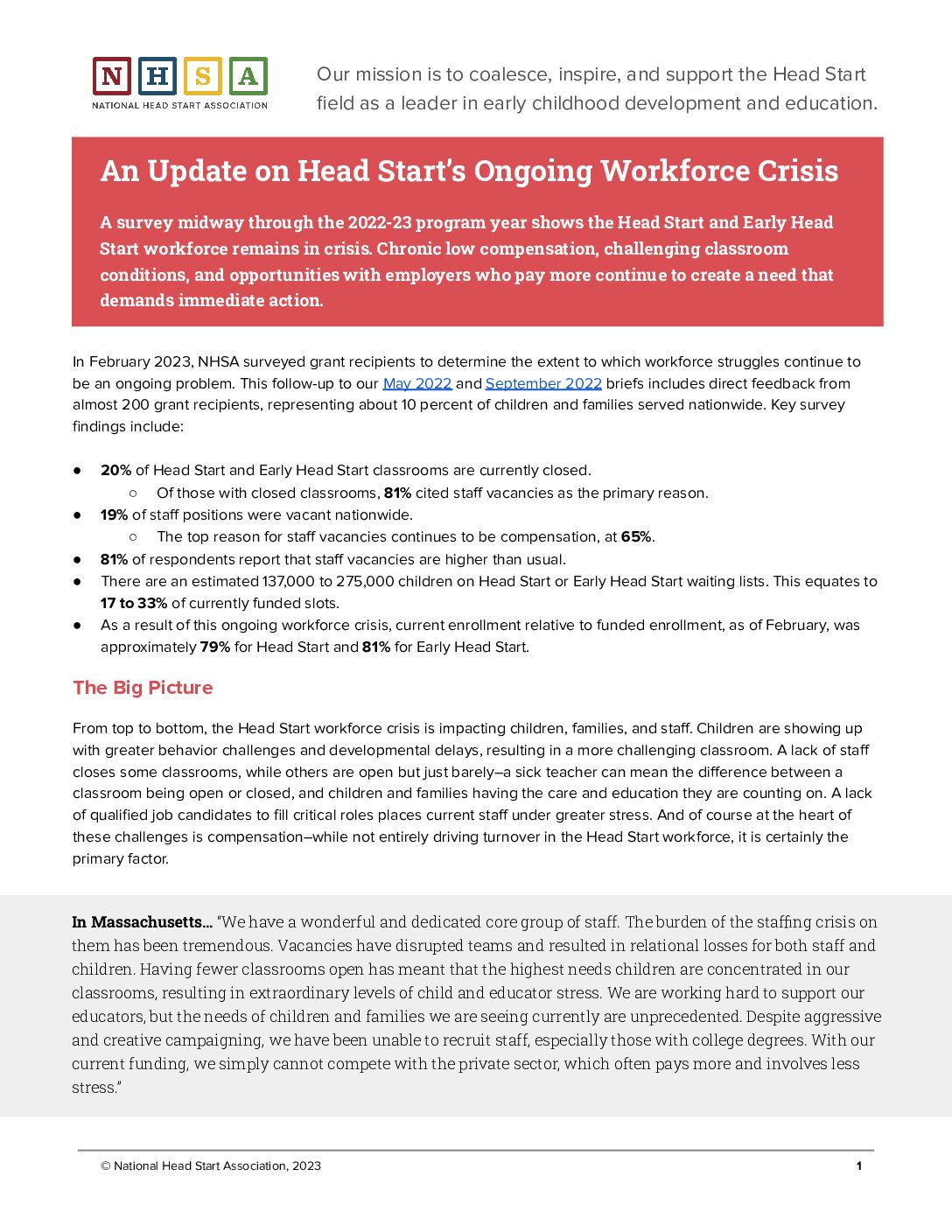The Head Start and Early Head Start workforce is in crisis.
The Head Start and Early Head Start workforce—a corps of dedicated professionals committed to the mission of serving the most vulnerable children and families—has been pushed to a breaking point. Chronic low compensation, challenging job conditions, and better opportunities with employers who pay more are combining to create a vortex of spiraling need that demands immediate action.
In a series of reports from 2022 and 2023, NHSA has documented the workforce challenges currently facing Head Start and Early Start, including the impact of low compensation, turnover and staff vacancies, increased child need, and more.
For too long, early childhood education has relied on the benevolence of workers willing to overlook compensation that puts them among the very lowest of paid professions. Workforce data indicate early educators face severe pay penalties for working with younger children in all states, with poverty rates an average of 7.7 times higher than teachers in the K-8 system.
October 2023
- 15% of staff positions are vacant, down from 19% in Feb. 2023
- 65% of respondents indicate that vacancies remain higher than usual
- 51% of respondents indicate the top reason for staff vacancies continues to be compensation
- 14% of classrooms are currently closed, down from 20% in Feb. 2023
- 55% of respondents have applied for a change of scope in the past three years
February 2023
- 20% of Head Start and Early Head Start classrooms are currently closed
- Of those with closed classrooms, 81% cited staff vacancies as the primary reason
- 19% of staff positions were vacant nationwide
- The top reason for staff vacancies continues to be compensation, at 65%
- 81% of respondents report that staff vacancies are higher than usual
- There are an estimated 137,000 to 275,000 children on Head Start or Early Head Start waiting lists. This equates to 17% to 33% of currently funded slots
- Current enrollment relative to funded enrollment, as of February 2023, was approximately 79% for Head Start and 81% for Early Head Start
September 2022
- 17% of Head Start and Early Head Start classrooms were closed
- Of those with closed classrooms, 77% cited staff vacancies as the primary reason
- 18% of staff positions were vacant nationwide
- 77% of respondents report that staff vacancies are higher than usual.
- 79% cited compensation as the driving force behind vacancies
- 66% noted a lack of candidates with required qualifications
- Current enrollment relative to funded enrollment, as of September 2022, was approximately 73% for Head Start and 77% for Early Head Start
May 2022
- 57% of respondents indicated compensation is the number one reason for staff leaving
- 85% of respondents indicated staff turnover is higher than in a typical year
- 90% of respondents’ programs have closed classrooms permanently or temporarily due to lack of staff
- An estimated average of 30% of staff positions are currently unfilled
Take Part
Join the National Head Start Association to help advance a strong and innovative early childhood profession.
Take Action
We need powerful advocates to secure a bright future for Head Start children and families.

